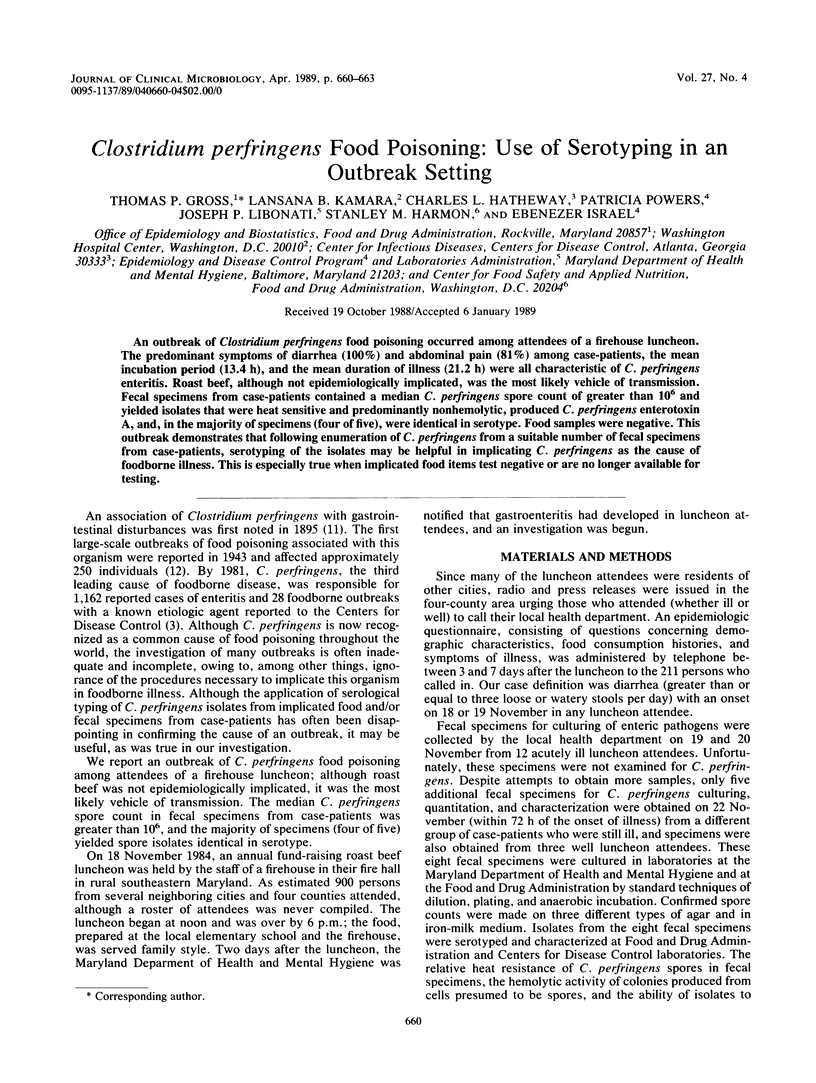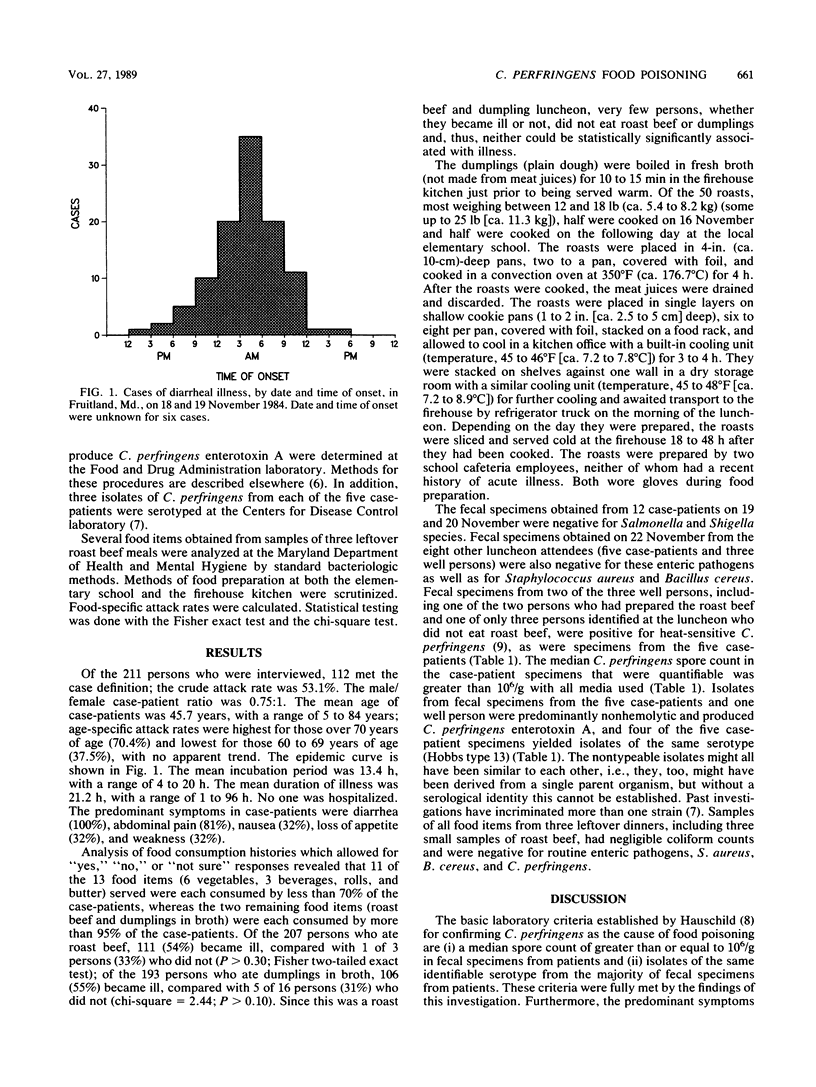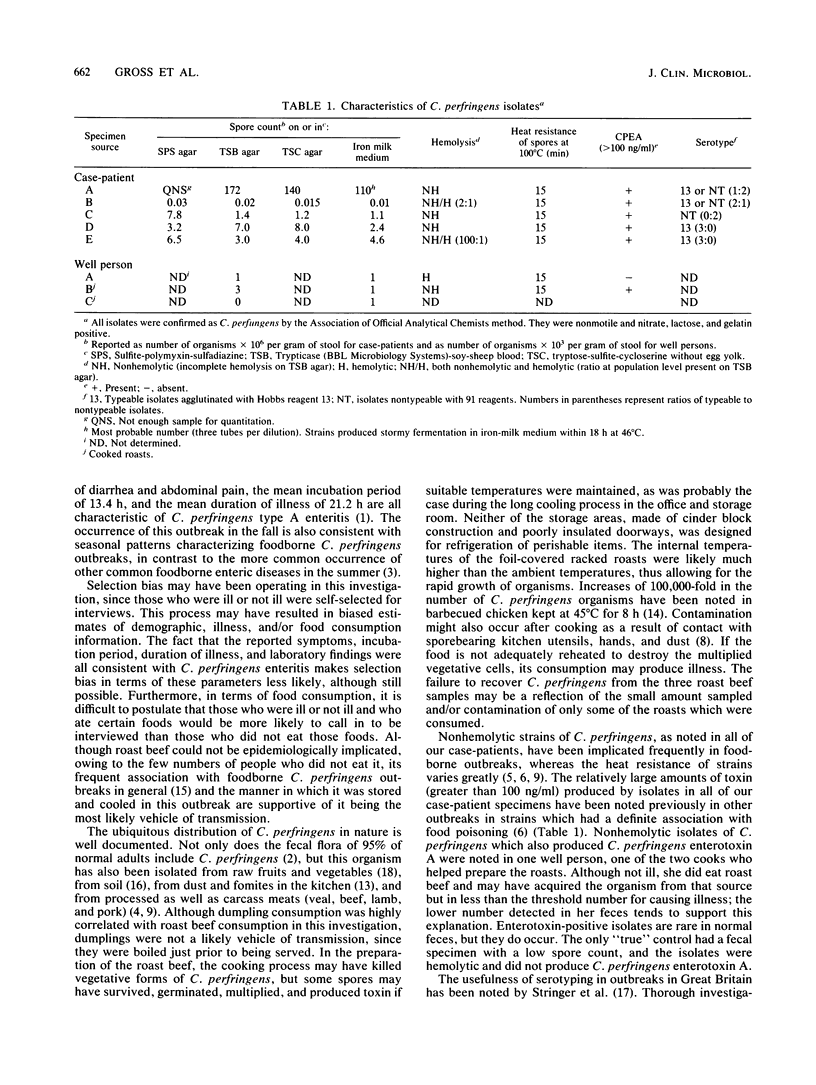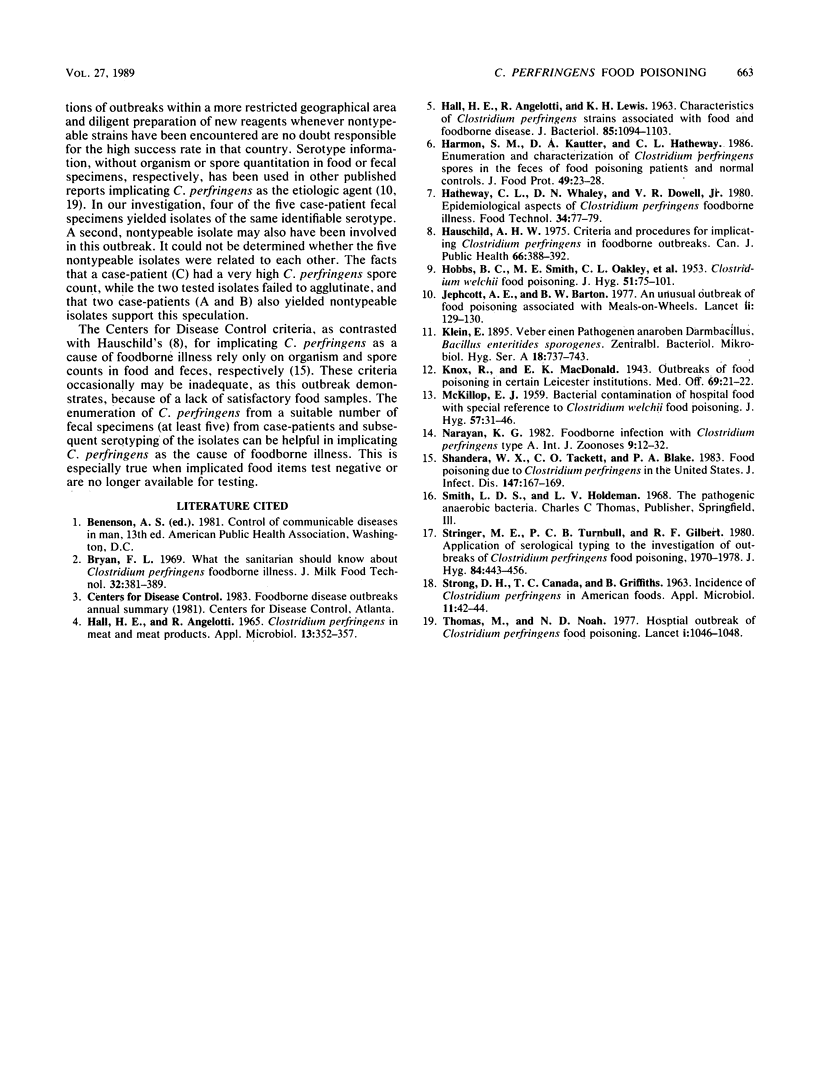Abstract
An outbreak of Clostridium perfringens food poisoning occurred among attendees of a firehouse luncheon. The predominant symptoms of diarrhea (100%) and abdominal pain (81%) among case-patients, the mean incubation period (13.4 h), and the mean duration of illness (21.2 h) were all characteristic of C. perfringens enteritis. Roast beef, although not epidemiologically implicated, was the most likely vehicle of transmission. Fecal specimens from case-patients contained a median C. perfringens spore count of greater than 10(6) and yielded isolates that were heat sensitive and predominantly nonhemolytic, produced C. perfringens enterotoxin A, and, in the majority of specimens (four of five), were identical in serotype. Food samples were negative. This outbreak demonstrates that following enumeration of C. perfringens from a suitable number of fecal specimens from case-patients, serotyping of the isolates may be helpful in implicating C. perfringens as the cause of foodborne illness. This is especially true when implicated food items test negative or are no longer available for testing.
Full text
PDF



Selected References
These references are in PubMed. This may not be the complete list of references from this article.
- HALL H. E., ANGELOTTI R. CLOSTRIDIUM PERFRINGENS IN MEAT AND MEAT PRODUCTS. Appl Microbiol. 1965 May;13:352–357. doi: 10.1128/am.13.3.352-357.1965. [DOI] [PMC free article] [PubMed] [Google Scholar]
- HALL H. E., ANGELOTTI R., LEWIS K. H., FOTER M. J. CHARACTERISTICS OF CLOSTRIDIUM PERFRINGENS STRAINS ASSOCIATED WITH FOOD AND FOOD-BORNE DISEASE. J Bacteriol. 1963 May;85:1094–1103. doi: 10.1128/jb.85.5.1094-1103.1963. [DOI] [PMC free article] [PubMed] [Google Scholar]
- HOBBS B. C., SMITH M. E., OAKLEY C. L., WARRACK G. H., CRUICKSHANK J. C. Clostridium welchii food poisoning. J Hyg (Lond) 1953 Mar;51(1):75–101. doi: 10.1017/s0022172400015515. [DOI] [PMC free article] [PubMed] [Google Scholar]
- Hauschild A. H. Criteria and procedures for implicating Clostridium perfringens in food-borne outbreaks. Can J Public Health. 1975 Sep-Oct;66(5):388–392. [PubMed] [Google Scholar]
- Jephcott A. E., Barton B. W., Gilbert R. J., Shearer C. W. An unusual outbreak of food-poisoning associated with meals-on-wheels. Lancet. 1977 Jul 16;2(8029):129–130. doi: 10.1016/s0140-6736(77)90133-7. [DOI] [PubMed] [Google Scholar]
- McKILLOP E. J. Bacterial contamination of hospital food with special reference to Clostridium welchii food poisoning. J Hyg (Lond) 1959 Mar;57(1):31–46. doi: 10.1017/s0022172400019872. [DOI] [PMC free article] [PubMed] [Google Scholar]
- Narayan K. G. Food borne infection with Clostridium perfringens type A. Int J Zoonoses. 1982 Jun;9(1):12–32. [PubMed] [Google Scholar]
- STRONG D. H., CANADA J. C., GRIFFITHS B. B. Incidence of Clostridium perfringens in American foods. Appl Microbiol. 1963 Jan;11:42–44. doi: 10.1128/am.11.1.42-44.1963. [DOI] [PMC free article] [PubMed] [Google Scholar]
- Shandera W. X., Tacket C. O., Blake P. A. Food poisoning due to Clostridium perfringens in the United States. J Infect Dis. 1983 Jan;147(1):167–170. doi: 10.1093/infdis/147.1.167. [DOI] [PubMed] [Google Scholar]
- Stringer M. F., Turnbull P. C., Gilbert R. J. Application of serological typing to the investigation of outbreaks of Clostridium perfringens food poisoning, 1970-1978. J Hyg (Lond) 1980 Jun;84(3):443–456. doi: 10.1017/s002217240002698x. [DOI] [PMC free article] [PubMed] [Google Scholar]
- Thomas M., Noah N. D. Hospital outbreak of clostridium perfringens food-poisoning. Lancet. 1977 May 14;1(8020):1046–1048. doi: 10.1016/s0140-6736(77)91272-7. [DOI] [PubMed] [Google Scholar]


